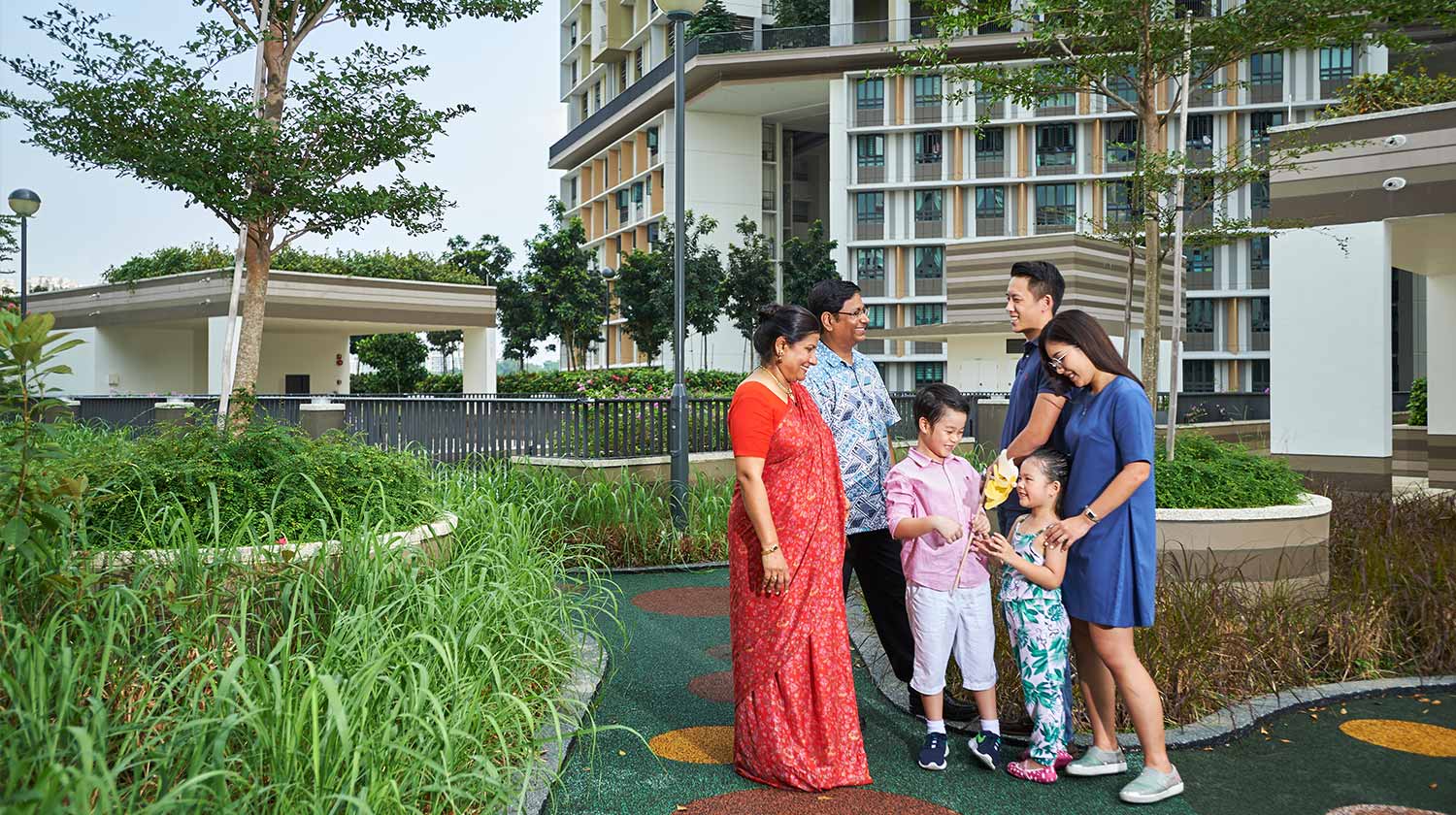To ensure quality living environment and in keeping with the changing needs of society, HDB has collaborated with Singapore University of Technology and Design (SUTD) on a social behavioural study christened ‘New Urban Kampung research programme’.
The three-year programme, encompassing in-depth multi-disciplinary study, will combine the fields of behavioural studies, Computational Social Science and Urban Informatics, to predict how the demographics in HDB towns are likely to evolve, and attempt to forecast residents’ behaviour and responses to initiatives introduced in their living environment, through a combination of big data and advanced modelling tools.
HDB’s Chief Executive Officer, Dr Cheong Koon Hean said, “The fast-changing urban landscape brings along with it increasingly complex housing issues and needs. To meet these challenges, HDB wants to advance the science behind how we plan, design and build our HDB towns and estates. With behavioural science studies and data analysis, we can better understand our residents’ needs and changing lifestyles and their likely responses to our plans and initiatives.”
The programme has been divided into four parts; the collaboration will culminate in the development of a New Urban Kampung framework to steer future town planning and housing design that will improve the overall quality of life for residents:
Gaining deeper understanding of HDB residents and their preferences
The study will seek to gain deeper insights into the composition of HDB residents beyond traditional demographic statistics such as age, race and income, and uncover emerging lifestyle trends, liveability definition and sentiments towards the community. This will be done through a combination of data from traditional census and surveys, with big data gathered through sensor networks placed around the estate (e.g. human traffic and movement sensors) and social listening. The insights gleaned will guide HDB’s planners and architects in formulating more targeted and customised improvements in HDB towns.
One possible outcome could be re-thinking the types of facilities required within a particular precinct to meet the changing needs and preferences of residents. For example, with residents becoming increasingly more digitally-connected, void decks could be equipped with Wi-Fi-enabled workspaces for residents to gather and study, organise workshops, or hold classes. Such initiatives will also encourage residents to make fuller use of communal spaces and take ownership of such spaces, fostering a stronger sense of belonging in their estates.
Identifying new quality of life indicators that reflect residents’ needs
As the socio-demographic makeup of HDB towns evolves, traditional quality of life indicators (e.g. healthcare, sanitation, safety etc.) may not adequately reflect the specific needs of HDB residents. Thus, research is needed to derive new quality of life indicators along two dimensions: Material conditions and resources within a neighbourhood (e.g. thermal comfort, access to amenities, urban greenery etc.), and psychosocial factors (e.g. cohesion among residents and sense of belonging). This will help guide future design and planning strategies to boost residents’ well-being.
Finding new ways to strengthen community-centric designs
A key facet of the study will be to find new ways of incorporating community-centric design into the heartlands, beyond the current provision of communal spaces such as gardens, playgrounds and fitness corners.
Firstly, through harnessing big data from sensors (i.e. human traffic or location sensors), the research could explore the impact of a precinct’s design on residents’ interaction and behaviour. This would help fine-tune the design of communal spaces for stronger community interaction. For example, movement trends captured by motion sensors on smart lighting in the estate could help HDB better understand how residents move around and utilise the community spaces in their estate. Residents could then be engaged to co-design those under-utilised spaces.
Secondly, the behavioural studies will provide insights into the common interests of residents. This could inspire new ways of bringing communities together, such as through smart applications and gamification. For example, if the data shows that residents in a particular estate are fond of cycling, customised cycling apps could be introduced to cultivate a cycling community in the estate. Such an app could link together residents who enjoy cycling, and allow them to publish their cycling mileage and make recommendations on scenic or safer cycling routes.
Forecasting effects of new HDB living initiatives
Existing environmental modelling tools, such as the City Application Visual Interface (CAVI), are well-developed to assess the effectiveness of sustainability-driven initiatives in HDB towns and estates. By integrating urban analytics into the tools, large amounts of social data could be analysed and simulations could be run on new HDB living initiatives to predict residents’ receptiveness before test-bedding them in real time.





